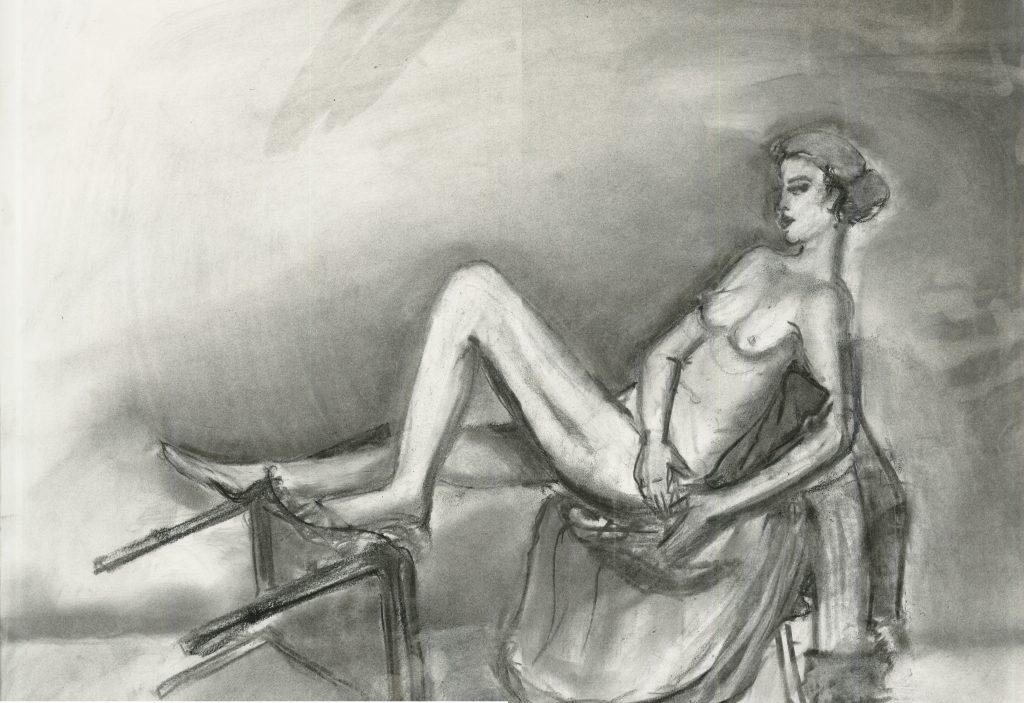As the class stepped into the unit of perspective drawing, we started out by making collages that gave the illusion of depth.
The first step was to make tonal drawings of a model using “boxy,” “mapping,” and “naturalistic” techniques. This step was important in getting students familiar with shading and how contrast of light should be treated in a drawing. For instance, the lighter side of a subject should be accompanied by a darker background, whereas the darker side could havea lighter background. These are some examples of my tonal drawings:
We were then asked to choose one or more of our figure drawings to include in a landscape collage. We worked with various materials like decorative paper, textures, and mark-making to create a collage that conveyed a sense of 3-dimensional depth. Since this project was basically a study of how we see space, I literally thought of space and decided to base my collage on that idea. I wanted to create a sense of infinite space by repeating the same image of the large figure at bottom in smaller figures above, and using different decorative papers and prints to make the moon and planets. I reduced the size of the upper figures and planets and placed them in an S-shape to evoke a sense of depth.










